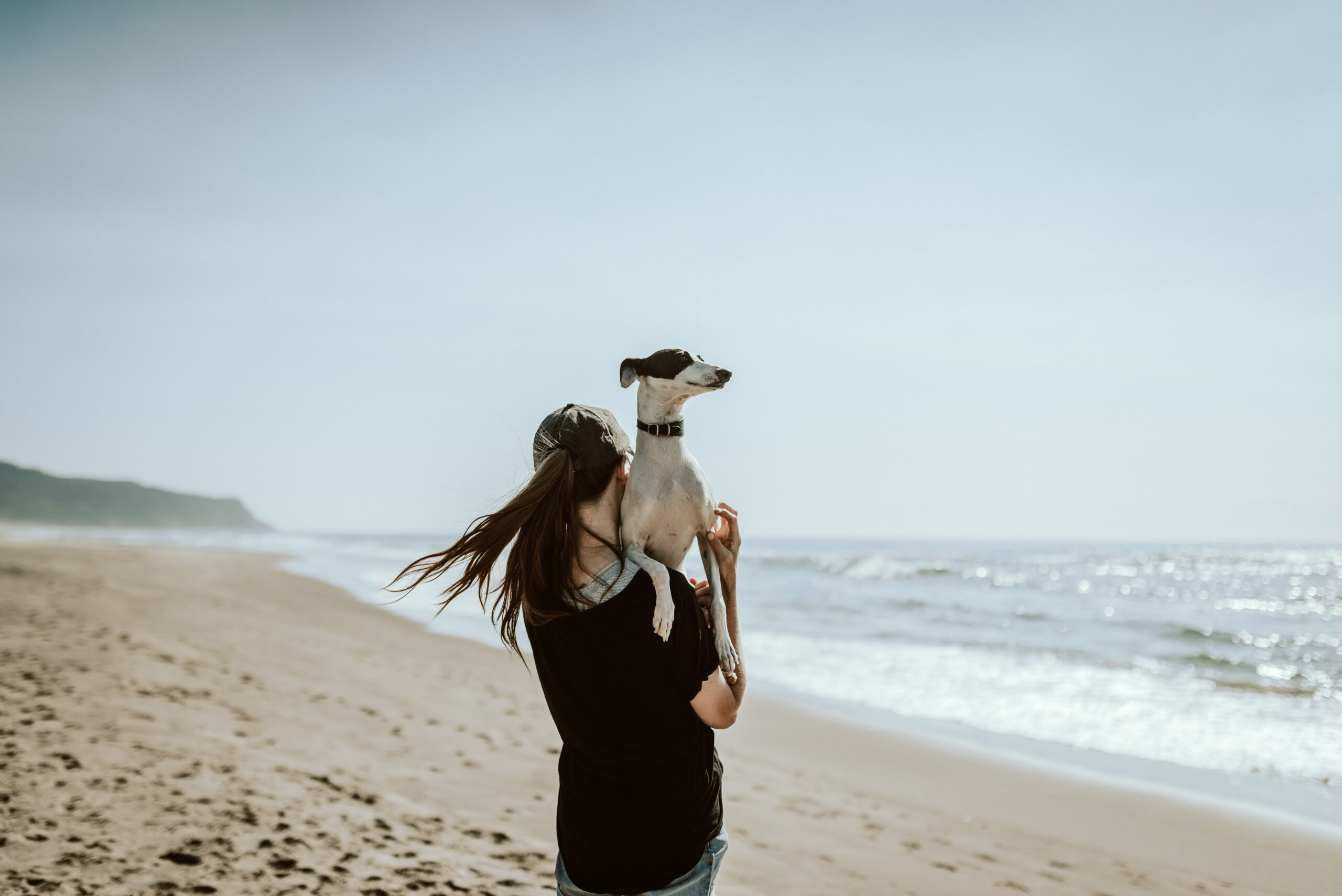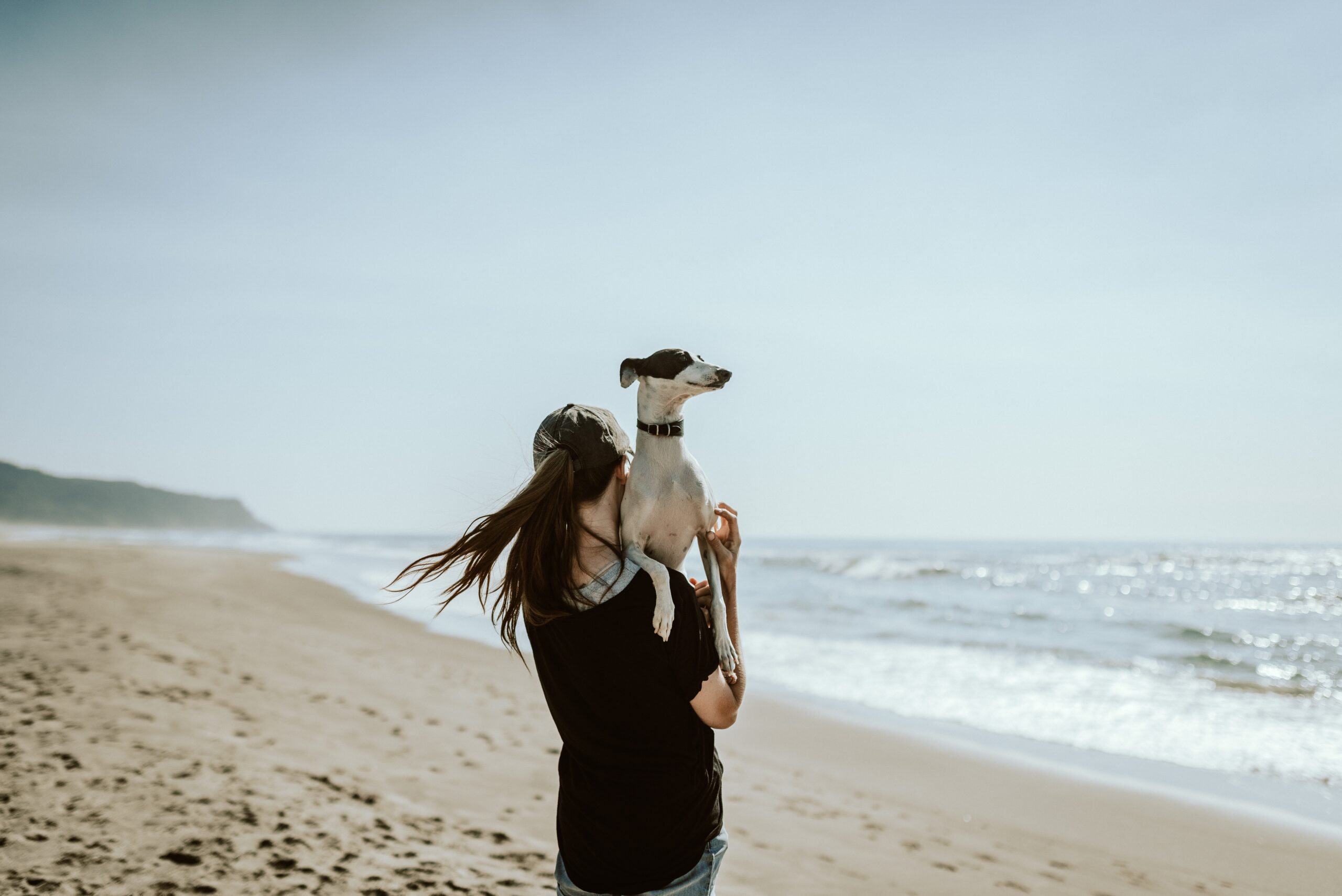If you’ve ever wondered whether it’s safe to give your furry friend rawhide chews, you’re not alone. Many dog owners grapple with this question, wanting to provide their dogs with a chewy treat that is both enjoyable and safe. This article will explore the potential risks and benefits of feeding rawhide chews to your beloved canine companion, shedding light on the topic and helping you make an informed decision for your furry friend’s well-being.
Potential Risks of Rawhide Chews
Rawhide chews are a popular choice for many dog owners as a treat or chew toy. However, it’s important to be aware of the potential risks associated with rawhide chews to ensure the safety of your furry friend.
Choking Hazard
One of the main concerns with rawhide chews is the risk of choking. Rawhide chews can be quite hard and if a piece breaks off, it can become lodged in your dog’s throat, leading to choking. This is especially true for smaller dogs or those who are aggressive chewers.
To minimize the risk of choking, it’s important to choose rawhide chews that are an appropriate size for your dog. The size and shape of the chew should be such that it can’t be easily swallowed whole or pose a choking hazard. It’s also crucial to monitor your dog while they are chewing on rawhide to ensure they are not biting off large chunks or swallowing them.
Digestive Issues
Another potential risk associated with rawhide chews is digestive issues. Rawhide is not easily digestible and can cause gastrointestinal problems in some dogs. If your dog swallows a large piece of rawhide, it can cause an obstruction in their digestive tract, leading to discomfort and potential surgery to remove the blockage.
To prevent digestive problems, it’s important to only give your dog rawhide chews that are appropriate for their size and chewing habits. If your dog has a sensitive stomach or has had previous digestive issues, it may be best to avoid rawhide altogether and opt for alternative chew options.
Bacterial Contamination
Bacterial contamination is another concern when it comes to rawhide chews. Rawhide is often made from the inner layer of animal hides, which can be a breeding ground for bacteria such as Salmonella or E. coli. If the rawhide is not properly processed, handled, or stored, it can pose a risk of bacterial infection to your dog.
To minimize the risk of bacterial contamination, it’s important to choose rawhide chews from reputable brands that prioritize safety and quality control. Additionally, always wash your hands thoroughly after handling rawhide and store it in a clean, dry place to prevent bacterial growth.
Chemical Treatments
Many rawhide chews on the market are treated with artificial colors, flavorings, and chemical preservatives. While these treatments may enhance the appeal of the rawhide for your dog, they can also pose potential health risks. Artificial colors and flavorings can contain chemicals that may be harmful to your dog’s health, especially if consumed regularly.
When choosing rawhide chews, opt for those that are made without artificial colors, flavorings, or chemical preservatives. Natural and unprocessed options are a safer choice for your dog’s overall well-being.
Choosing Safe Rawhide Chews
Now that we’ve discussed the potential risks associated with rawhide chews, let’s explore some guidelines to help you choose safe options for your furry friend.
Avoid Rawhide Sticks
Rawhide sticks, in particular, pose a higher risk of choking and digestive problems. Their narrow shape and hardness make them more likely to break off into smaller pieces, increasing the chances of choking. It’s best to avoid rawhide sticks and choose safer alternatives instead.
Select High-Quality Brands
When it comes to rawhide chews, not all brands are created equal. It’s important to do your research and choose rawhide chews from reputable companies that prioritize safety and quality. Look for brands that have a good track record and positive customer reviews.
Additionally, it can be helpful to check for certifications such as the Food and Drug Administration (FDA) approval or the Association of American Feed Control Officials (AAFCO) compliance. These certifications ensure that the rawhide chews meet certain safety and quality standards.
Opt for Natural and Unprocessed Options
To minimize the risk of chemical treatments and artificial additives, it’s best to choose natural and unprocessed rawhide chews. These chews are made without the use of chemicals and undergo minimal processing, preserving the natural qualities of the rawhide.
Organic and naturally-derived rawhide chews are a great alternative for those who want to avoid chemically processed options. These chews are often made from hides sourced from organically raised animals, ensuring a healthier and safer option for your dog.
Consider Alternative Chew Options
If you’re still concerned about the potential risks associated with rawhide chews, there are plenty of alternative chew options available for your dog. Vegetable-based chews, such as sweet potato or carrot sticks, are a healthy and safe choice. Raw bones, specifically designed for chewing, can also provide a natural and enjoyable chewing experience for your dog.
Other natural chew choices include bully sticks, antlers, and rope toys. These options are often made from natural materials and provide an engaging chew experience for your furry friend.

Choking Hazard
To further address the concerns surrounding choking hazards associated with rawhide chews, let’s explore some specific considerations and precautions.
Size and Shape of Rawhide Chews
The size and shape of the rawhide chews you choose are crucial to minimize the risk of choking. Select chews that are appropriate for your dog’s size and chewing habits. Larger dogs may require thicker, more robust chews, while smaller dogs will need smaller and softer options.
Avoid giving your dog rawhide chews that are too small or thin, as they can easily be swallowed whole or break off into smaller pieces. It’s always better to choose chews that are slightly larger than your dog’s mouth to ensure they can’t be swallowed whole.
Monitor Your Dog While Chewing
Regardless of the size and shape of the rawhide chew, it’s essential to closely monitor your dog while they are chewing. This allows you to intervene if you notice any signs of choking or if your dog is biting off large chunks. By being vigilant, you can prevent potential choking accidents and ensure your dog’s safety.
Avoid Giving Whole Chews
Giving your dog a whole rawhide chew, especially a large one, can increase the risk of choking. Instead, it’s advisable to break the rawhide chew into smaller, more manageable pieces. This not only minimizes the risk of choking but also allows your dog to enjoy the rawhide chew over a period of time instead of gulping it down quickly.
By following these precautions, you can mitigate the potential choking hazards associated with rawhide chews and provide your dog with a safe and enjoyable chewing experience.
Digestive Issues
Let’s delve into the topic of digestive issues and how you can prevent them when giving your dog rawhide chews.
Potential Risk for Obstruction
Rawhide is not easily digestible, and if your dog swallows large pieces or whole chews, it can lead to digestive problems. When ingested, rawhide can swell in the stomach or intestine, potentially causing an obstruction. This can be a painful condition that may require surgery to remove the blockage.
To minimize the risk of digestive issues, it’s important to choose rawhide chews that are appropriate for your dog’s size and chewing habits. Avoid giving your dog chews that are too large or thick, as they increase the likelihood of swallowing large pieces.
Preventing Digestive Problems
If your dog has a sensitive stomach or has previously experienced digestive issues, it may be best to avoid rawhide chews altogether. Instead, consider alternative chew options that are easily digestible and less likely to cause gastrointestinal problems.
It’s also important to supervise your dog while they are chewing on rawhide. If you notice any signs of discomfort, vomiting, or changes in appetite or bowel movements, consult your veterinarian immediately. They can provide guidance on managing your dog’s digestive health and recommend appropriate chew options.
Alternate Chew Options for Sensitive Dogs
For dogs with sensitive stomachs or digestive issues, there are several safer alternatives to rawhide chews. Edible chews, such as natural bones or dental chews specifically designed for digestion, can provide a satisfying chewing experience without the risk of digestive problems.
Soft chew toys made from rubber or nylon can also be a great option for dogs with sensitive stomachs. These toys are designed to be gentle on the digestive system while still providing a satisfying chewing experience.
By being mindful of your dog’s digestive health and choosing appropriate chew options, you can keep their tummy happy and prevent any potential digestive problems.

Bacterial Contamination
Bacterial contamination is an important consideration when it comes to rawhide chews. Here’s what you need to know to prevent bacterial risks.
Sources of Contamination
Rawhide chews, especially those that are not properly processed or stored, can harbor bacteria such as Salmonella or E. coli. It’s essential to be aware of the potential sources of contamination to minimize the risk to your dog.
Rawhide chews can become contaminated during the manufacturing process if proper hygiene and safety measures are not followed. Additionally, improper handling or storage of rawhide chews can introduce bacteria and increase the risk of infection.
Signs of Bacterial Infection
If your dog has been exposed to bacterial contamination from rawhide chews, there are certain signs to watch out for. These may include vomiting, diarrhea, loss of appetite, lethargy, and general discomfort.
If you notice any of these symptoms, it’s important to consult your veterinarian for proper diagnosis and treatment. Bacterial infections can be serious and may require medical intervention to ensure your dog’s health and well-being.
Preventing Bacterial Risks
To minimize the risk of bacterial contamination, it’s important to choose rawhide chews from reputable brands that prioritize hygiene and safety. Look for brands that have good manufacturing practices and employ stringent quality control measures.
Additionally, always wash your hands thoroughly after handling rawhide chews to avoid any potential transmission of bacteria. Store rawhide chews in a clean, dry place to prevent bacterial growth and discard any chews that show signs of mold or spoilage.
By taking these preventive measures, you can significantly reduce the risk of bacterial contamination associated with rawhide chews and keep your dog safe and healthy.
Chemical Treatments
Artificial colors, flavorings, and chemical preservatives are commonly used in rawhide chews to enhance their appeal. However, these chemical treatments can pose potential health risks to your dog. Here’s what you need to know.
Artificial Colors and Flavorings
Rawhide chews that are treated with artificial colors and flavorings can contain chemicals that may be harmful to your dog’s health. Regular consumption of these additives can lead to allergic reactions, gastrointestinal issues, or other adverse effects.
When choosing rawhide chews, opt for those that are made without the use of artificial colors and flavorings. Natural alternatives, such as chews flavored with natural extracts or herbs, can be a safer choice for your dog’s overall well-being.
Chemical Preservatives
Chemical preservatives are often used in rawhide chews to extend their shelf life and prevent spoilage. However, some of these preservatives, such as BHA, BHT, or ethoxyquin, have been linked to health concerns in dogs.
To avoid the potential risks associated with chemical preservatives, choose rawhide chews that are made without the use of these additives. Look for natural alternatives or chews that are preserved through natural methods such as air-drying or dehydration.
Healthier Alternatives
If you’re concerned about the potential health risks associated with chemical treatments in rawhide chews, there are several healthier alternatives available. Natural chews made from ingredients such as sweet potato, pumpkin, or coconut can provide a tasty and safe chewing experience for your dog.
Additionally, consider other natural chew choices such as bully sticks, antlers, or rope toys. These options are often made from natural materials and do not require chemical treatments or additives.
By choosing chemical-free and naturally-derived options, you can ensure the safety and well-being of your furry friend while still providing them with a satisfying chew.

Avoid Rawhide Sticks
Rawhide sticks are a common variation of rawhide chews, but they come with their own set of risks and concerns. Here’s why it’s best to avoid rawhide sticks for your dog.
Higher Choking Risk
Rawhide sticks, particularly those that are narrow or excessively hard, pose a higher risk of choking compared to other rawhide chews. Their shape and consistency make them more likely to break off into smaller pieces, increasing the chances of choking.
To keep your dog safe, it’s best to avoid rawhide sticks altogether and opt for safer chew alternatives that are less likely to cause choking incidents.
Potential Digestive Problems
Rawhide sticks can also increase the risk of digestive problems in dogs. Their narrow shape can make it easier for dogs to swallow them whole or bite off large chunks. This can lead to gastrointestinal issues, such as blockages or discomfort, which may require medical intervention.
By choosing other types of rawhide chews or alternative chew options, you can minimize the potential digestive problems associated with rawhide sticks.
Choose Safer Alternatives Instead
To ensure your dog’s chewing experience is safe and enjoyable, it’s advisable to choose safer alternatives instead of rawhide sticks. Opt for rawhide chews that have a more solid and robust shape, as they are less likely to break off into smaller pieces.
Additionally, consider alternative chew options such as rubber or nylon chew toys that are specifically designed for chewing. These toys are typically made from durable materials that can withstand heavy chewing while minimizing the risk of choking or digestive problems.
By avoiding rawhide sticks and selecting safer alternatives, you can provide your dog with a satisfying chewing experience without compromising their safety and well-being.
Select High-Quality Brands
Choosing high-quality brands is essential when it comes to rawhide chews. Here’s what you should consider to ensure the safety and quality of the chews you give to your dog.
Researching Reputable Companies
When selecting rawhide chews, it’s important to research and choose reputable companies that prioritize the safety and well-being of dogs. Look for companies that have a good track record and a commitment to quality and safety.
Consider factors such as the company’s manufacturing processes, sourcing of raw materials, and their dedication to customer satisfaction. This information can help you determine if a brand is reliable and trustworthy.
Checking for Certifications
Certifications such as FDA approval or AAFCO compliance can provide reassurance that the rawhide chews meet certain safety and quality standards. It’s a good idea to check if the brand you’re considering has any certifications that validate the quality and safety of their products.
These certifications ensure that the rawhide chews are manufactured and handled adhering to strict guidelines, minimizing the potential risks associated with contamination or substandard quality.
Reading Customer Reviews
Customer reviews can offer valuable insights into the quality and safety of rawhide chews. Look for reviews from customers who have purchased and used the specific rawhide chews you’re considering. Pay attention to any feedback regarding the safety, durability, and overall satisfaction with the product.
By reading customer reviews, you can gain a better understanding of the experiences of other dog owners and make an informed decision about the brand and type of rawhide chews you choose.
By prioritizing high-quality brands, you can ensure the safety and satisfaction of your dog when it comes to rawhide chews.





